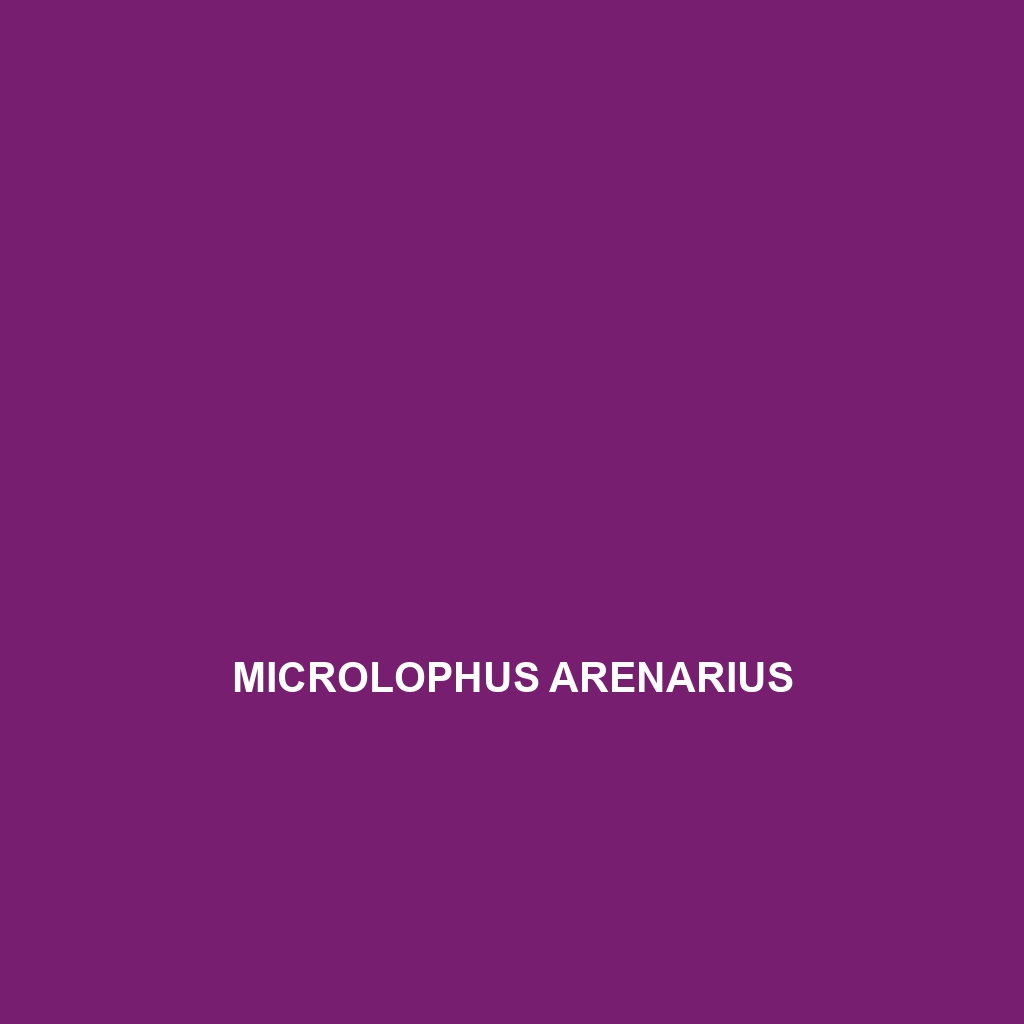Common Name
Microlophus arenarius
Scientific Name
Microlophus arenarius
Habitat
Microlophus arenarius is primarily found in the unique and diverse ecosystems of the Galápagos Islands, particularly on sandy coastal areas and rocky shores. The species thrives in these environments, which are characterized by a warm, arid climate influenced by the marine environment. The surrounding marine habitats provide rich food sources, while the varied topography, from lowland coastal regions to mountainous terrains, allows for a range of microhabitats. This species can adapt to both dry and moist areas, commonly found near savannas and tidal pools. These coastal and marine habitats are essential for its survival, offering both shelter and feeding opportunities.
Physical Characteristics
Microlophus arenarius exhibits striking physical attributes that help it blend into its natural surroundings. Typically, adults reach a body length of 10 to 12 cm. Characterized by a slender, elongated body, this species has a distinctive long tail that aids in balance and agility. The coloration of Microlophus arenarius varies from light brown to dark gray with darker spots, providing excellent camouflage against the sandy beach and rocky surfaces. Its skin texture is rough due to small, granular scales, which not only protects it from predators but also aids in shedding moisture. In addition, they have well-developed limbs and sharp claws that are advantageous for climbing and hunting, distinguishing them from other lizard species.
Behavior
Microlophus arenarius displays fascinating behaviors, particularly concerning its social interactions and foraging habits. These lizards are primarily diurnal, meaning they are most active during the daytime. Males are known for their territorial behavior, often engaging in displays to ward off rivals, which includes head-bobbing and push-ups. The species is not migratory, but they exhibit local movements to sunbathe or hunt for food.
In terms of mating rituals, these lizards exhibit a unique courtship behavior characterized by intricate displays and physical posturing. During the breeding season, males exhibit vibrant colors, possibly to attract females, while engaging in elaborate rituals that include body movements and vocalizations.
Diet
Microlophus arenarius is classified as an omnivore, showcasing a diverse diet consisting of both plants and small animals. Their dietary habits primarily include insects, fruits, and algae, making them vital contributors to the ecosystem’s nutrient flow. They are known to forage actively, using their keen eyesight to spot food both on land and in shallow waters. The consumption of insects helps control pest populations, while the intake of plant matter promotes seed dispersal, efficiently intertwining their role within the food web.
Reproduction
The reproductive cycle of Microlophus arenarius is characterized by seasonal breeding patterns, generally occurring during the warmer months. After a courtship period, the female lays between 4 to 12 eggs in sandy nests, where they are left to develop independently. The incubation period lasts approximately 60 to 90 days. Once hatched, the young are precocial, meaning they are relatively mature and mobile shortly after emerging from the eggs, requiring minimal parental care. This reproductive strategy allows the species to maintain its population despite environmental challenges.
Conservation Status
As of current assessments, Microlophus arenarius is classified as Least Concern on the IUCN Red List. However, like many species endemic to the Galápagos Islands, it faces threats from habitat destruction, invasive species, and climate change. Conservation efforts are focused on habitat protection and monitoring population levels. Additionally, public awareness campaigns aim to educate locals and tourists on the ecological importance of preserving these unique lizards and their environment.
Interesting Facts
Microlophus arenarius possesses several unique adaptations that help it thrive in its coastal habitat. One such adaptation is its remarkable ability to tolerate saltwater; they can often be seen soaking in the sun on coastal rocks while occasionally diving into tidal pools to hunt. Interestingly, these lizards are known for their playful interactions, often observed basking together or investigating their surroundings in groups. Such behaviors showcase their social nature, which is somewhat rare among lizard species.
Role in Ecosystem
In the intricate ecosystem of the Galápagos Islands, Microlophus arenarius plays a significant ecological role. They function as both prey and predator, contributing to the food web dynamics. As a predator, they help regulate insect populations, while serving as a food source for larger predators such as birds and mammals. Furthermore, their plant consumption aids in seed dispersal, promoting the health of various coastal flora. Their presence ensures a balanced ecosystem, highlighting their importance as a keystone species within their habitat.
